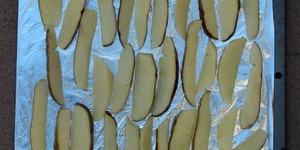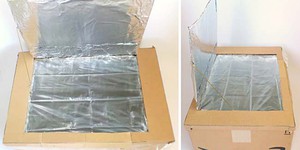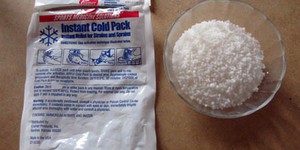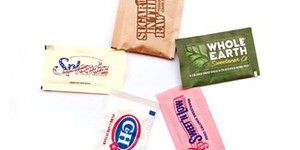Others Like “'Make Mine Medium-Rare': Heat Conduction in Steak” (top 20 results)
|
How much force can a rubber band withstand before breaking? Do rubber bands that stretch longer take more or less force to break? How does the elasticity of a rubber band change with temperature? Use a spring scale to measure the applied force, and a meter stick or ruler to measure the change in length. Recording with a video camera (or possibly two) can help you to capture the values at the moment before the rubber band breaks. You can change the temperature of the rubber bands using…
Read more
A delicious and quick lunch is a cup of tomato soup and a grilled cheese sandwich. Biting into the toasty, butter-soaked bread and gooey cheese is very comforting. But what makes the cheese melt so nicely? Do all cheeses melt this way? In this cooking and food science fair project, you will experiment with making and determining the best recipe for processed cheese.
Read more
Have you ever bitten into a beautiful golden-brown cookie only to realize in dismay that the bottom is burned and black? What causes that uneven baking? Can it be prevented? You can discover the answer by conducting a science fair project to determine whether different types of cookie sheets result in noticeably different cookies. First you'll need to do some background research to figure out what kinds of baking sheets you can buy. For example, there are aluminum, steel, insulated, and…
Read more
What is the first thing you do when you wake up on a cold, frosty morning? Snuggle down deeper under the covers? Animals, like puppies and piglets, do not like being cold either, but they do not have hands or blankets to wrap themselves up. So when animals get chilled, they change their behavior and do things like huddle—they curl up close to other animals. In this mammalian biology science fair project, you will see just how much huddling can help reduce heat loss.
Read more
The first bite of a fresh-picked apple, the crunch of morning toast, the deep cut into rich, flaky layers of baklava, the pleasing snap of a chip. Besides being delicious, what do these foods have in common? They're crisp. They have a brittleness that causes them to shatter in your mouth when you first bite into them. It's a sensation that many people enjoy. Making potatoes crispy requires some extra cooking steps, as you'll discover in this food science project, but the results are well worth…
Read more
Caramelization is the name of the cooking process that occurs as sugar is heated and the molecules begin to break apart. But what happens to the sugar as it breaks apart? And what do the physical changes mean for the flavor of the sugar? Using the Internet or cookbooks, read up on the chemistry of caramelization, then head to the kitchen with an adult to caramelize your own batch of sugar. With an adult's help, dissolve 1 1/3 cups of sugar in 2/3 cup of water. Heat the mixture in a pan over…
Read more
This is a modern version of a classic experiment by Jacques Charles on the volume of a gas at different temperatures. Charles discovered the relationship between volume and temperature of gases that now bears his name. This project shows you a simple method for re-creating this famous experiment.
Read more
Here is a project that uses direct solar power, gathering the sun's rays for heating/sterilizing water or cooking. It is a low-cost technology that seems to have everything going for it. Does it work? Can you find ways to improve it? Find out with this project.
Read more
Instant cold packs are popular with coaches and parents for treating minor bumps and bruises. The instant cold packs are not pre-cooled—you just squeeze the cold pack and its starts to get cold. So how does it work? In this chemistry science fair project, you will investigate the chemical reaction that occurs in instant cold packs.
Read more
There is nothing quite like the smell of fresh-baked bread to make your mouth water! As any baker can tell you, you cannot bake bread without yeast. Yeast actually eat sugar so that they can reproduce and make more yeast, and make bread dough rise. But can they use sugar substitutes to do this? In this science project you will get to investigate how well yeast grow with sugar substitutes as a food source. Pass the butter, please!
Read more
|
Explore Our Science Videos
Design and Make Automata
Iteration in the Engineering Design Process
Make 3D Printed Optical Illusions











